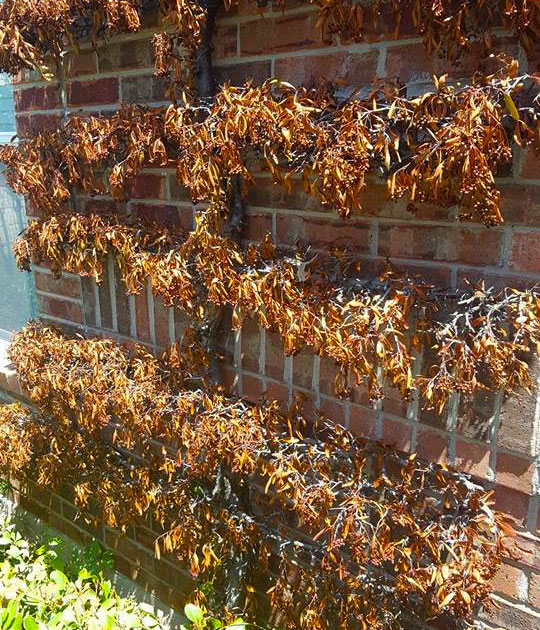What exactly is “root rot?”
A lot of plant deaths are explained away casually as being “root rot.” People seem content with that broad-sweep explanation, but what does it really tell us?
Certainly, most plants require good drainage. Other than aquatic plants that have been given special provision for growing in stagnant soil or even in water, most plants will die if their roots are deprived of oxygen for several days, certainly weeks. The roots in those cases don’t rot. The plants drown.
On the other hand, if a plant has active decay in its lower trunk, that decay could develop and spread down into the root system. Those roots, then, could actually rot and die. But that sequence isn’t all that common.
In Texas, the majority of plants that are categorized as having died from “root rot” have actually succumbed to the soil-borne fungus known as cotton root rot, or Texas root rot.
Characteristic symptoms of cotton root rot…
Several factors and symptoms point to the likelihood of cotton root rot. While a definitive identification is available from the Texas A&M Plant Disease Diagnostic Laboratory, these are the clues that can pretty well nail it down.
• Cotton root rot (CRR) occurs almost always in areas with alkaline soils. (That’s essentially near and west from I-35.)
• CRR affects a wide range of plant species, obviously with cotton being one of the main ones. It is caused by the soil-borne fungus Phymatotrichum omnivorum.
• CRR may lie dormant in the ground for many years before attacking a plant.
• CRR usually kills quickly, and it affects the entire plant at the same time. Trees will succumb within 1-4 weeks. Shrubs within 1-2 weeks. Annuals and perennials in only a few days, although they are not as notably affected. Plants will wilt as if they are dry, but soil may or may not be dry. Watering will not perk them up.
• CRR moves through the soil slowly – just inches per year. I watched a row of 5 apple trees past which I drove to work in Carrollton daily. The end one died from CRR one year, and then the next one the next year. And one tree per year until all five were dead and had been removed. I’ve watched a dozen lacebark elms do the same thing in Allen.
• You might be able to slow the progression of the disease by adding a sulfur soil acidifier to the ground. (Remember that CRR is a problem only in alkaline soils.) But generally that benefit will play out in a few years and the disease will resume its attacks.
You’re better off planting resistant or immune species from the outset. Hollies, junipers, nandinas, crape myrtles, oaks, cedar elms, pecans, and magnolias are all able to survive where other species have failed. Otherwise, you just plant susceptible species and hope that maybe your plantings will be spared.

